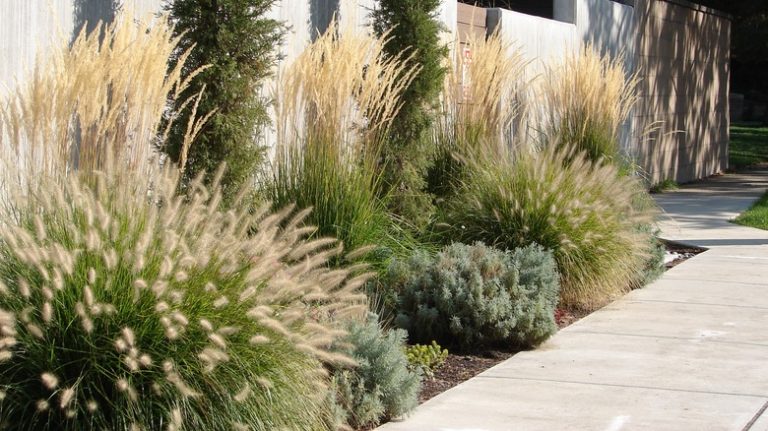Cotoneaster is a shrub that belongs to the rose family, Rosaceae. It is known for its beautiful foliage and attractive flowers. Cotoneasters are popular plants and widely used in landscaping due to their low maintenance requirements and ornamental value.
The origin of cotoneasters can be traced back to North America, Asia, and Europe. There are several species and varieties of cotoneasters, each with its own specific characteristics and growing requirements.
One of the most common species is Cotoneaster horizontalis. It is a low-growing shrub that forms mounds of horizontal branches, hence its name. This variety is known for its attractive foliage, which turns shades of red in the autumn.
Cotoneasters bloom in the spring, producing clusters of small flowers in shades of white, pink, or lilac. These flowers attract bees and other pollinators. After the flowers have bloomed, they are followed by small red berries, which can persist throughout the winter.
When it comes to caring for cotoneasters, they prefer a sunny place with well-drained soil. They are drought-tolerant once established, but regular watering is necessary during dry spells. Cotoneasters are relatively pest and disease resistant, but it is still important to keep an eye out for common issues like aphids and powdery mildew.
Pruning cotoneasters is usually done in late winter or early spring. It is important to remove any dead or diseased branches and to shape the plant if desired. Cotoneasters can also be used as hedge plants due to their dense growth habit.
In conclusion, cotoneasters are versatile and attractive shrubs that can be used to enhance any garden or landscape. Whether you are looking for a ground cover, a hedge, or simply a plant to add some color and interest, cotoneasters are a great choice.
How to Plant and Grow Cotoneaster
Cotoneaster is a versatile shrub that offers many benefits to any garden. With its attractive foliage, berries, and spreading habit, it is a popular choice for hedges, groundcover, or as a standalone plant. If you are considering planting cotoneaster in your garden, here are some tips to help you get started.
Planting
When planting cotoneaster, choose a spot in your garden that receives full sun or partial shade. Cotoneaster can tolerate a wide range of soil types but prefers well-draining soil. Before planting, prepare the soil by removing any weeds and adding compost or organic matter to improve fertility. Make sure to water the plant thoroughly after planting to help establish its roots.
Growing
Cotoneaster is a low-maintenance shrub that requires minimal care once established. Water the plant regularly, especially during dry periods, but avoid overwatering as it can lead to root rot. Fertilize the plant in early spring with a balanced fertilizer to promote healthy growth and abundant flower and fruit production.
Pruning
Pruning cotoneaster is not required, but you can trim it to maintain its shape or control its size. If pruning, do so in late winter or early spring before new growth appears. Remove any dead, damaged, or crossing branches. Make clean cuts just above a bud or lateral shoot to encourage branching. Avoid pruning too heavily, as it can affect the plant’s ability to produce flowers and berries.
Pests and Diseases
Cotoneaster is generally resistant to pests and diseases. However, aphids and spider mites can infest the plant, especially in hot and dry climates. If needed, use insecticidal soap or neem oil to control these pests. Keep an eye out for any signs of disease, such as leaf spots or gray mold, and treat accordingly.
FAQs (Frequently Asked Questions)
Q: How fast do cotoneasters grow?
A: The growth rate of cotoneasters can vary depending on the specific species and conditions. However, most cotoneasters have a moderate growth rate and can reach their mature size within a few years.
Q: Can cotoneasters be used as a hedge?
A: Yes, cotoneasters can be used as a hedge due to their dense branching habit and spreading growth. They can be easily shaped and pruned to form a neat and attractive hedge.
Q: Do cotoneasters attract birds?
A: Yes, cotoneasters bear small berries that are attractive to birds. They provide a food source for birds, especially during the winter months.
Q: Where are cotoneasters native to?
A: Cotoneasters are native to various regions in Europe, Asia, and North Africa. They have been introduced to many other parts of the world due to their ornamental value.
In conclusion
Cotoneaster is a beautiful and versatile shrub that can enhance any garden with its attractive foliage, flowers, and berries. With proper care and maintenance, it can thrive in a wide range of climates and soil conditions. Whether used as a groundcover, hedge, or standalone plant, cotoneaster is a fantastic addition to any garden.
Cotoneaster Overview
Cotoneaster is a genus of shrubs and small trees that belong to the rose family. These plants are native to parts of Europe, Asia, and North Africa. They are known for their spreading growth habits and attractive foliage and fruit.
In their natural habitat, cotoneasters can be found in a variety of environments, including woodlands, mountain slopes, and rocky areas. They are versatile plants that can adapt to different growing conditions, although they prefer well-drained soil and full sun or partial shade.
There are over 100 species of cotoneaster, each with its own unique characteristics. Some common types include Cotoneaster horizontalis, which has horizontal branches arranged in a herringbone pattern, and Cotoneaster divaricatus, which has arching branches that resemble the shape of a spirea.
Cotoneasters are known for their attractive flowers and fruit. They produce small, five-petaled blooms in the early summer, which are followed by bright red or orange berries in the fall. These fruits are a favorite of birds and can add a pop of color to the garden.
When it comes to caring for cotoneasters, they are relatively low-maintenance plants. They can tolerate a range of climates and are hardy in most areas. They require regular watering, especially during dry periods, and can benefit from regular fertilization. Pruning is also necessary to maintain their shape and remove dead or damaged branches.
One of the main issues that may arise with cotoneasters is powdery mildew, a fungal disease that affects the leaves and stems. This can be prevented by providing adequate air circulation and avoiding overhead watering. Aphids can also be a problem, but they can be easily controlled with insecticidal soap or neem oil. Overall, cotoneasters are relatively pest and disease resistant.
In conclusion, cotoneasters are a popular choice for gardeners due to their attractive foliage, flowers, and fruit. They are versatile plants that can thrive in various growing conditions and require minimal care. Whether used as a hedge, ground cover, or ornamental shrub, cotoneasters are sure to add beauty to any landscape.
Where to Plant Cotoneaster
Cotoneasters are versatile shrubs that can be planted in a variety of locations. They are commonly used as groundcover plants due to their low-growing and spreading habits.
When selecting a place to plant cotoneaster, consider its growing characteristics and habitat preferences. Cotoneasters are typically found in temperate climates and are adaptable to different soil types. They can tolerate both full sun and partial shade, making them suitable for a range of garden conditions.
Cotoneaster can be planted as a standalone shrub or in mounds or cascading forms to create attractive landscape features. They can also be grown as a groundcover to control weeds and erosion on slopes or large areas of the ground.
Cotoneaster can be propagated from stem cuttings, and some varieties can also be grown from seeds or by layering. They can be easily planted in pots or directly in the ground, depending on your preference and the specific variety you are growing.
One popular cotoneaster variety, Cotoneaster lucidus, is commonly used as a companion plant to attract birds with its colorful berries. The dense foliage of cotoneasters also provides a habitat for many beneficial insects.
When planting cotoneaster, ensure that the soil is well-draining to prevent waterlogging, as this can lead to root rot. They are generally low-maintenance plants and require only occasional watering, especially during dry spells. However, do not overwater them as they prefer slightly dry conditions.
As for care and maintenance, cotoneaster can be pruned to maintain their shape and control their size. They generally do not require regular pruning, but you can remove dead or damaged branches in early spring. Repotting is usually necessary every few years, especially for potted cotoneasters.
It is important to note that some cotoneaster varieties, such as Cotoneaster procumbens, can be invasive in certain areas. Check with your local county extension office or a knowledgeable nursery before planting cotoneaster to ensure it does not pose a threat to native plants.
In summary, cotoneasters are versatile shrubs that can be planted in various locations, including as groundcover, cascading forms, or standalone shrubs. They are adaptable to different soil types and can tolerate both sun and shade. Cotoneasters are low-maintenance plants that attract birds with their colorful berries and provide a habitat for beneficial insects. Care and maintenance include occasional watering, pruning, and repotting for potted varieties. However, be aware of potential invasiveness in certain varieties and consult local authorities before planting them.
How and When to Plant Cotoneaster
Planting cotoneaster can be a rewarding experience, as these versatile shrubs offer a range of benefits for your garden. Here are a few tips to help you successfully plant and care for cotoneaster:
- Choose the right variety: There are many different types of cotoneasters available, including the popular Cotoneaster horizontalis, Cotoneaster dammeri, and Cotoneaster lacteus. Each variety has its own unique growth habit, leaf size, and fruit color. Consider the specific needs of your garden and choose a variety that will thrive in your climate.
- Find the perfect spot: Cotoneasters generally prefer full sun to partial shade, so choose a location that receives plenty of sunlight. They also prefer well-drained soil, so make sure the planting area has good drainage.
- Prepare the soil: Before planting, prepare the soil by removing any weeds or grass and loosening it with a garden fork. You can also add compost or well-rotted manure to improve the soil fertility.
- Plant in the spring: Cotoneasters are typically planted in the spring, after the last frost. Dig a hole that is slightly larger than the root ball of the plant and place the cotoneaster in the hole, making sure that the top of the root ball is level with the ground. Backfill the hole with soil and firm it gently around the roots.
- Water regularly: After planting, water the cotoneaster regularly to help establish its root system. Keep the soil moist but not waterlogged, as excessive water can lead to root rot. Once the cotoneaster is established, it will require less frequent watering.
- Provide support if needed: Some cotoneaster varieties, such as Cotoneaster horizontalis, have a spreading or prostrate habit and may benefit from support or training. You can use stakes or a trellis to help the branches grow in the desired direction.
- Prune as needed: Cotoneasters are generally low-maintenance plants, but they may require occasional pruning to maintain their shape. Prune in early spring before new growth begins, and remove any dead, damaged, or crossing branches.
- Watch out for pests and diseases: Cotoneasters can be susceptible to common garden pests such as aphids, scale insects, and spider mites. Regularly inspect your plants for any signs of infestation and treat as necessary. Additionally, be on the lookout for diseases such as fire blight and powdery mildew, and take appropriate action if needed.
- Enjoy the benefits: Cotoneasters are prized for their attractive foliage, delicate flowers, and colorful berries. They also provide important habitat for birds and other wildlife, as their berries are a food source during the winter months. By planting cotoneaster, you can create a beautiful and wildlife-friendly garden.
With these tips in mind, you can successfully plant and care for cotoneaster in your garden. Enjoy the beauty and benefits that these versatile shrubs have to offer!


